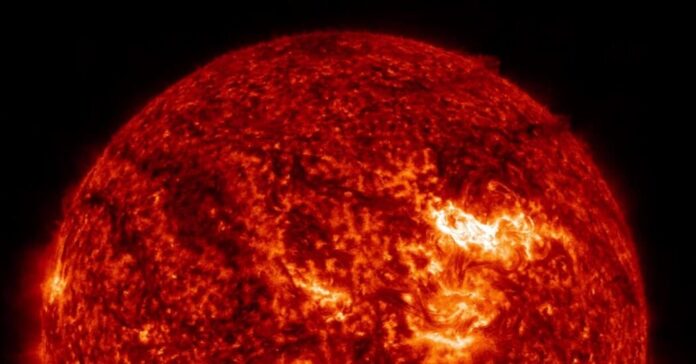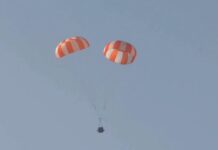A planned launch of NASA’s ESCAPADE mission to Mars was scrubbed on Wednesday due to heightened solar activity. This decision highlights the growing concern over how powerful bursts from our sun can impact a world increasingly reliant on satellite technology.
The recent solar storm, triggered by two massive coronal mass ejections (CMEs), created stunning auroras across the globe. However, these spectacular light shows masked a more serious issue: significant disruption to Earth’s magnetosphere, the protective shield that guards us from harmful radiation. These CMEs collided with Earth’s magnetic field, triggering what scientists are calling a geomagnetic storm – a dangerous surge in charged particles directed at our planet.
While Earth’s atmosphere and magnetic field offer some natural protection for lower-orbiting satellites, those operating at higher altitudes face significantly greater risk from these solar storms. Here, the magnetosphere weakens, leaving spacecraft exposed to intensified radiation that can damage sensitive electronics. Thankfully, most high-altitude satellites are built with specialized shielding to withstand such events.
The immediate danger posed by this storm centered around two aspects: potential satellite malfunctions and increased collision risks.
During geomagnetic storms, satellites in lower orbits can experience erratic behavior like signal dropouts or even system reboots. The unpredictable drag caused by atmospheric changes during a storm can also alter their trajectories, potentially leading to dangerous encounters with other satellites or the vast amount of space debris already orbiting Earth.
This concern was directly responsible for postponing NASA’s ESCAPADE mission. The launch window had been planned precisely when the spacecraft would separate from its rocket booster, a critical moment requiring uninterrupted functionality. As Dr. Rob Lillis, the mission’s principal investigator, explained, “the radiation could have crashed the spacecraft’s computers and prevented the deployment of the solar arrays.” This vital step was deemed too risky amidst such intense solar activity.
The situation underscores the delicate balancing act required for launching satellites during periods of heightened solar activity. Agencies like NASA and those monitoring space debris meticulously track real-time conditions, adjusting launch windows and carefully evaluating risks before giving the green light. This constant vigilance is crucial as our reliance on satellites continues to grow across sectors from communication to navigation and scientific research.
The upcoming Viasat satellite launch remains tentatively scheduled for Thursday, but United Launch Alliance, responsible for rocket operations, emphasizes their close monitoring of evolving solar conditions. This ongoing tension highlights the fact that while we’ve learned a lot about managing space weather risks, predicting the sun’s erratic behavior with absolute certainty remains an ongoing challenge.
The intensity of this particular storm, already deemed potentially the strongest in over two decades by experts at the British Geological Survey, emphasizes the continuous need for improved forecasting and preparedness within the global space weather community.









































